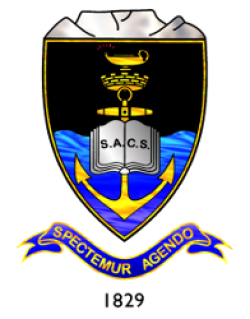William Daly struggled to be recognised as a surgeon and doctor. His grandson, Ramsay Daly, achieved this and more. In the intervening decades the status of the surgeon had risen up the medical ranks.
This Ramsay Daly was born in Potchefstroom in 1867, the third child of Ramsay and Catharina. They faced a problem in educating their children. Well-off families sent the young to the Cape for schooling but some of those who missed out, and Roley Schikkerling is an example, still grew up well-versed in contemporary thinking.
Ramsay and Catharina had 10 children and, given the economic crisis after the First Anglo Boer War, they would have been quite unable to send teenage Ramsay to school in the Cape. Once again family solidarity came into play. Catharina’s aunt, Erika Elizabeth Landsberg had married Carl Pistorius, moved to Rustenburg and had seven children before he died. She then married a much younger man, Dr Ashley Nugent Steadman from Surrey in the United Kingdom. It seems likely that this Dr Steadman took an interest in young Ramsay because he attended school in Rustenburg, then he was sent to South African College in 1882.[1]
 “The school prides itself on the balanced education it provides, the world-class facilities on offer, the fact that SACS men strive for excellence in all spheres of school life and that it places a strong emphasis on high moral values.” [2]
“The school prides itself on the balanced education it provides, the world-class facilities on offer, the fact that SACS men strive for excellence in all spheres of school life and that it places a strong emphasis on high moral values.” [2]
The school also had laboratories and this may have awoken Ramsay’s interest in laboratory science. From SACS he went to England and graduated with an MB ChB from University of Durham in 1891.[4] He was the first burgher of the Transvaal with a formal qualification in medicine. He registered as a medical practitioner in Johannesburg in 1893 with a practice on the corner of Kotze and Twist Streets.[5] He was surgeon to the South African Republican Police and medical officer for the gaols. In 1895, he went back to Potchefstroom to marry Mildred Scorgie.

Operating theatre in 1902. From https://johannesburg1912.wordpress.com/
Ramsay’s aim was surgery at the Johannesburg Hospital. While it was possible to do minor surgery in patients’ homes, more extensive procedures needed an operating theatre. Building on the Hospital started in 1888 in a collection of tents but by 1889 a building was erected on land donated by Paul Kruger. By 1890 there were 130 beds, including beds for “natives”. The Hospital grew rapidly. By 1897 funds donated by the Randlord, Barney Barnato, allowed the extension of the hospital to 320 beds, including wards for Coloured people and a new operating theatre. It was the largest hospital in South Africa.[6]
Shortly before the Anglo Boer War Ramsay Daly was nominated by the government to the staff of the Johannesburg Hospital. He was set for success but, instead, he went on commando. Like Roley Schikkerling he seems to have had “the instinct of human freedom”.
In 1899 he was in Limpopo complaining that medicines he had ordered had not arrived. Repeatedly he asked for material for vaccination against smallpox. He served in Dundee and Ladysmith. Official records seem to indicate a firm focus on infectious disease, especially smallpox which was ravaging the country.
After the War Ramsay was appointed Assistant Surgeon in the Johannesburg Hospital. This was not what he wanted but they held his war activities against him. So, in 1909 he went to Edinburgh and specialised in surgery. As a Fellow of the Royal College of Surgeons (FRCS) he joined the full surgical staff in Johannesburg in 1915. His new skills were put to good use. He became President of the Witwatersrand Branch of the British Medical Association and reported on leading surgical developments internationally, through his own experience and the current medical literature.[7] As an example, his critical analysis of resection of the stomach as a treatment for gastric ulcers includes description of current practice in America at the Mayo Clinic and in England.[8]
Ramsay and Mildred Daly were now living among Johannesburg’s upper echelons. Ramsay’s passion was race horses and he was a member of the exclusive Rand Club. His family were not forgotten. Ramsay and Mildred had no children but he followed family tradition by paying for his nephew, Charles, son of Jean Daly, to attend Marist Brothers College in Johannesburg. For Charles and his older brother (another Ramsay L’Amy Daly) he was always “Oom” and Oom and Aunt Millie’s house was a place of glamour and kindness.
Ramsay Daly died in 1937. In his last years he went insolvent, a long process between 1929 and 1934. The Court accepted Ramsay’s account: “He ascribed his failure to losses sustained in the purchase of unproductive farm lands, the acquisition of thoroughbred animals for leasing as race horses on borrowed money, which resulted in heavy losses, and losses on shares and a diamond proposition at Grasfontein.” He was immediately rehabilitated. It is worth noting that the Great Depression in South Africa lasted from 1929 well into the 1930s. After Ramsay’s death Millie returned to Potchestroom where she died in 1962, still the focus of fond attention from Oom’s nephew, Ramsay.
[1] Ritchie, W. The History of the South African College, Vol 2: SACS Alumni..
[2] South African College High School. History. http://sacshigh.org.za/about/history/
[3] SA History. Inauguration ceremony of the SACS takes place. http://www.sahistory.org.za/dated-event/inauguration-ceremony-south-african-college-school-sacs-takes-place-0
[4] Many of these details come from Obituary by Dr Bensusan, 1937, SA Medical Journal, June 12, 416-7.
[5] Government Gazette 29 January 1915.
[6] Daly, R., 1922, The origins and development of the Johannesburg Hospital and its branches, South African Medical Record, Feb 11, 50-3.
[7] For publications see South African Medical Journal 1922 to 1937. http://journals.co.za/search?value1=ramsay+daly&option1=fulltext&option2=pub_serialIdent&value2=journal%2Fm_samj&operator2=AND
[8] Daly, R. 1922, A case of resection of the stomach. South African Medical Journal, Volume 20, Issue 8, Apr, 154.
